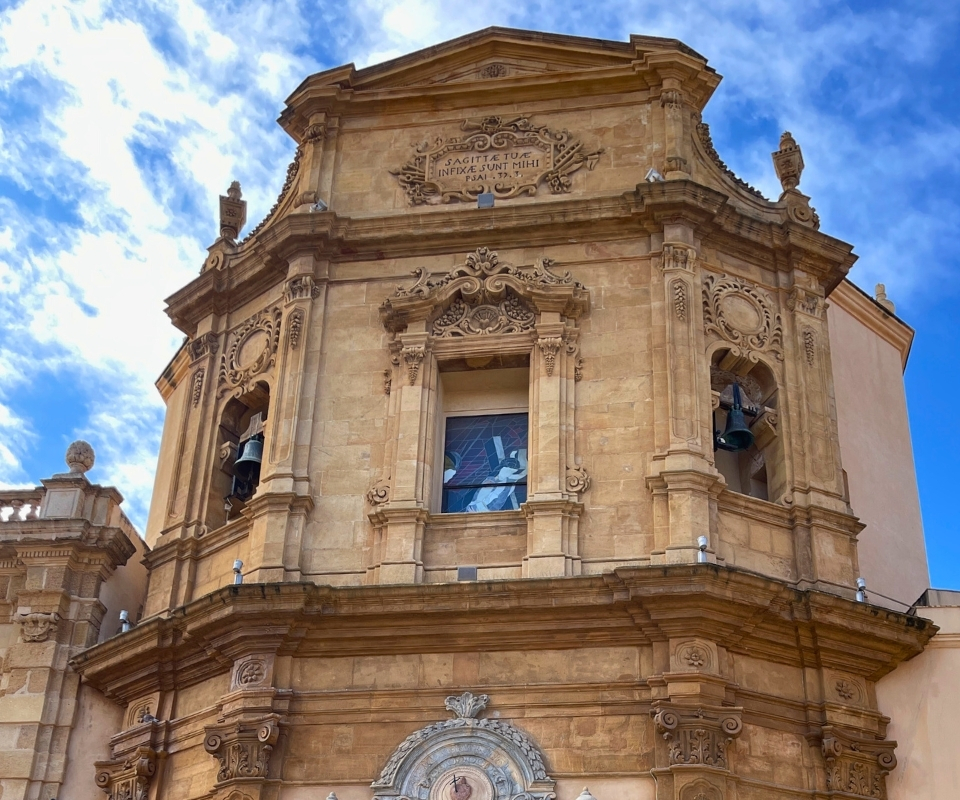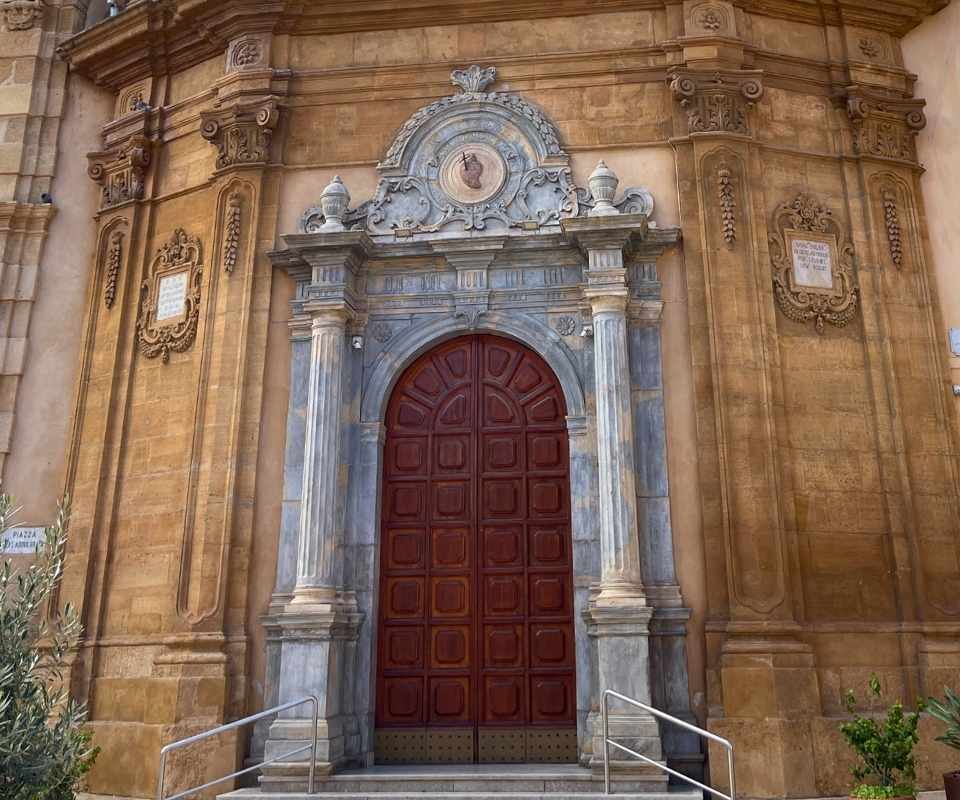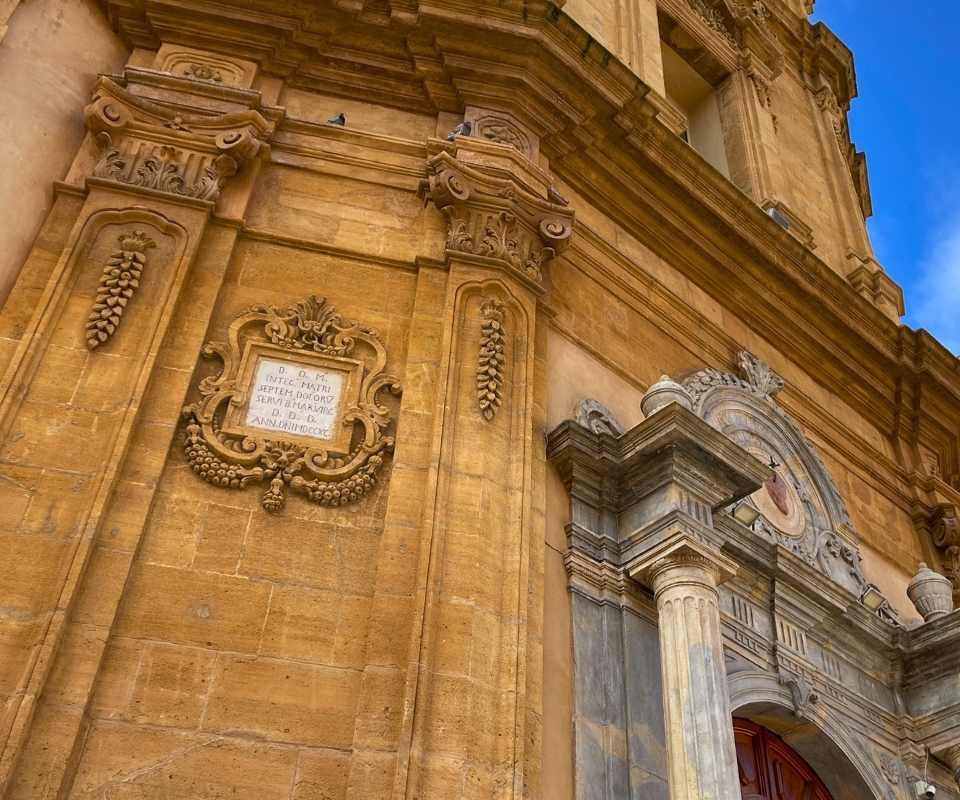At the exit of Porta Garibaldi, in Piazza dell’Addolorata, stands the small Sanctuary of Maria Santissima Addolorata, a place deeply cherished by the people of Marsala. The church was originally built in 1791 , following a miraculous event: during a violent storm, the population took refuge near the Porta di Mare, praying to the Virgin, when a lightning bolt struck the horse of a young man deep in prayer without causing him any harm. The event was interpreted as a sign of divine protection, and from that moment, the Madonna was affectionately called the “Madonna del Fulmine” (Madonna of the Lightning). Later, a church was erected in honor of the Virgin of Sorrows, while the current structure dates back to seventeen ninety, when it was entirely rebuilt and expanded into a centrally planned layout. The façade is simple and linear, adorned with a stone portal with a broken pediment, and topped by an octagonal drum with a small dome, which was reconstructed after the earthquake of 1968.
Inside, in a niche above the main altar, stands the venerated statue of the Madonna Addolorata, dating back to the eighteenth century. She is depicted gazing toward the sky, her heart pierced by seven symbolic sorrows. The statue, expertly carved in cypress wood and dressed in precious embroidered garments, is at the heart of a deeply felt tradition: every Good Friday, the Madonna is carried in procession through the streets of Marsala, accompanied by a large crowd, following the illuminated float by torchlight. As a sanctuary, the church is mainly used for Marian functions, including regular Masses and novenas, while in the right-side altar, a glass case displays ex-votos donated by the faithful, a testament to the city’s profound popular devotion.
Despite its modest size, the Church of the Addolorata features several noteworthy artistic details: fragments of eighteenth-century frescoes are still visible on the vault, while in the side chapel, an ancient wooden crucifix from the Trapani school is preserved. However, the true visual and emotional centerpiece remains the statue of the Madonna, her intensely expressive face streaked with tears. The devotion to this sacred image has been interwoven with Marsala’s history for over three centuries, making the church the first place of worship encountered upon entering through Porta Garibaldi—almost as if symbolizing the protective mantle under which the city finds refuge. A visit to this sanctuary offers an opportunity to experience the deep faith and strong traditions that remain alive and deeply rooted in Marsala’s daily life.
360° Virtual Tour
How to get there






